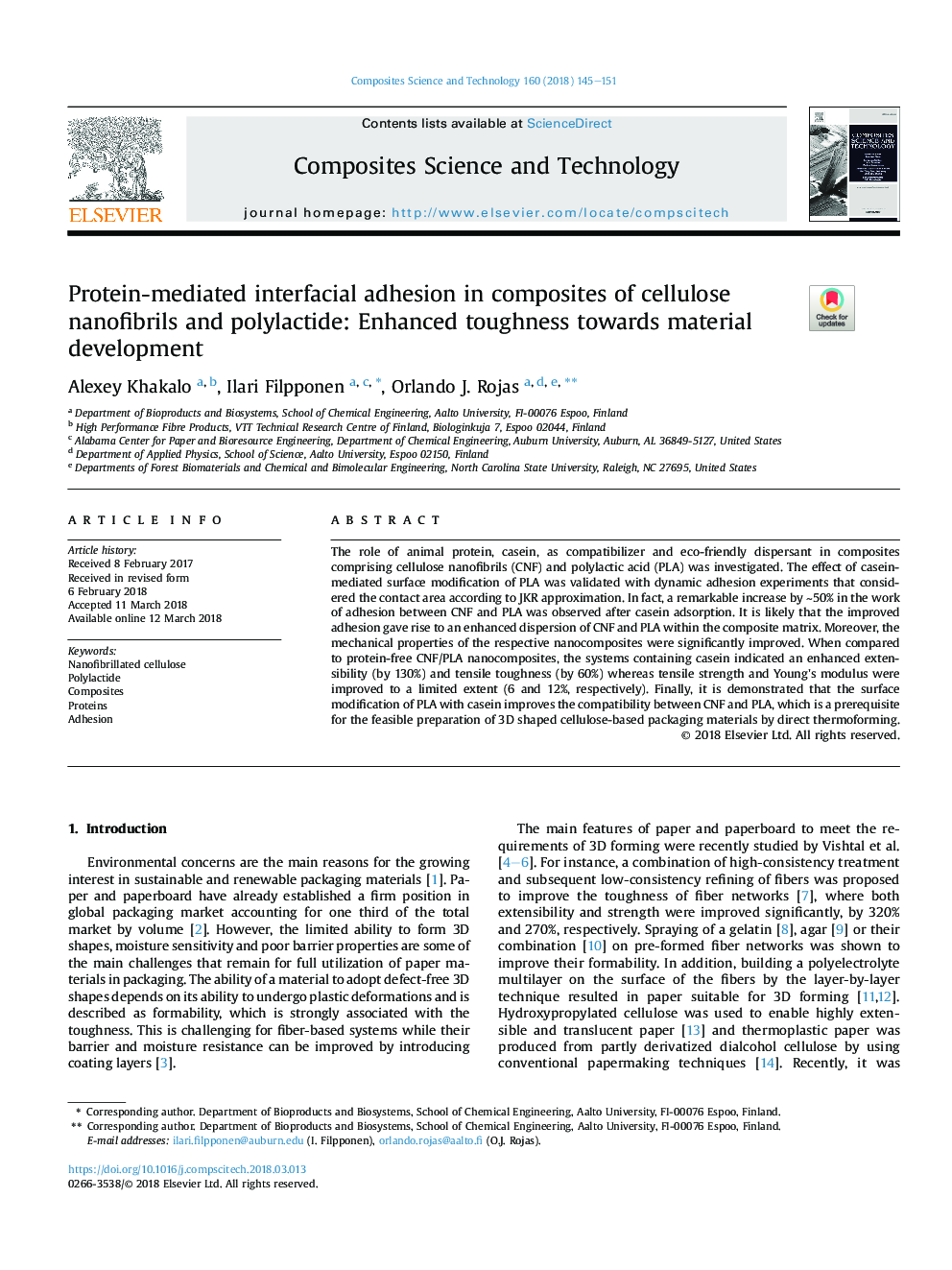| Article ID | Journal | Published Year | Pages | File Type |
|---|---|---|---|---|
| 7214487 | Composites Science and Technology | 2018 | 7 Pages |
Abstract
The role of animal protein, casein, as compatibilizer and eco-friendly dispersant in composites comprising cellulose nanofibrils (CNF) and polylactic acid (PLA) was investigated. The effect of casein-mediated surface modification of PLA was validated with dynamic adhesion experiments that considered the contact area according to JKR approximation. In fact, a remarkable increase by â¼50% in the work of adhesion between CNF and PLA was observed after casein adsorption. It is likely that the improved adhesion gave rise to an enhanced dispersion of CNF and PLA within the composite matrix. Moreover, the mechanical properties of the respective nanocomposites were significantly improved. When compared to protein-free CNF/PLA nanocomposites, the systems containing casein indicated an enhanced extensibility (by 130%) and tensile toughness (by 60%) whereas tensile strength and Young's modulus were improved to a limited extent (6 and 12%, respectively). Finally, it is demonstrated that the surface modification of PLA with casein improves the compatibility between CNF and PLA, which is a prerequisite for the feasible preparation of 3D shaped cellulose-based packaging materials by direct thermoforming.
Related Topics
Physical Sciences and Engineering
Engineering
Engineering (General)
Authors
Alexey Khakalo, Ilari Filpponen, Orlando J. Rojas,
